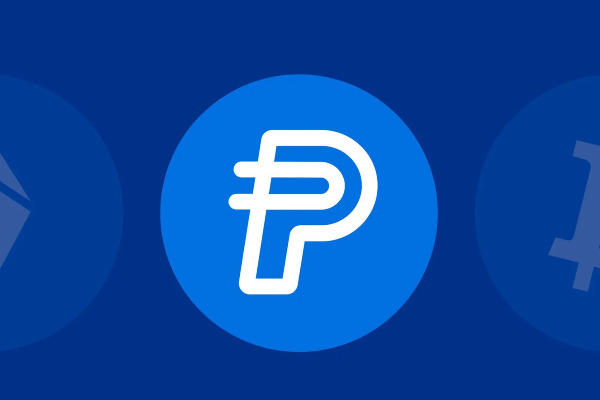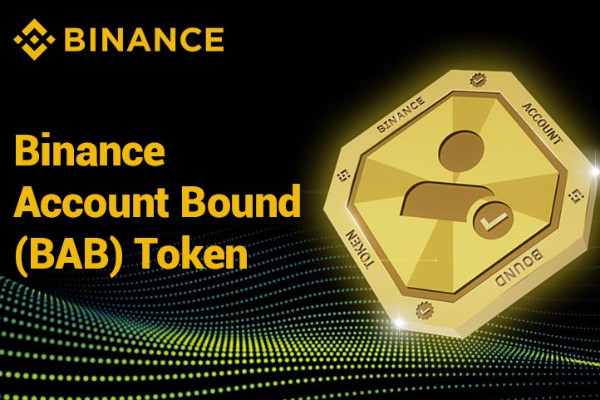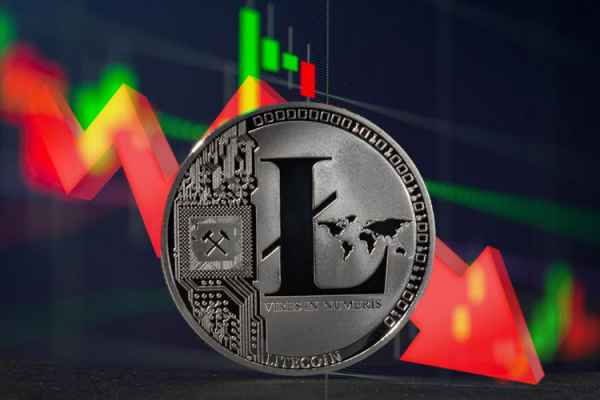Crypto coins and tokens may look similar as so many people often use them interchangeably. But did you know that the two are actually different?

The crypto industry has matured a lot in the past few years, but one can say that it's still relatively new to many people.
If you're just starting in crypto and blockchain, it's essential to understand the crypto-related terms that are commonly used, such as crypto "coins" and "tokens".
Even though both of these terms are often used alternately, they are actually different in several ways.
Here are the main differences between crypto coins and tokens:
- Digital coins operate on their own dedicated blockchain network, while tokens are constructed within established blockchains.
- Digital coins primarily serve the purpose of facilitating transactions, whereas tokens offer a wider range of functionalities.
- Creating a token is simpler and more cost-effective compared to developing a coin, as tokens leverage the infrastructure of an existing blockchain.
- Tokens have the potential to evolve into coins if the project decides to create its own blockchain and transition the tokens to function as separate coins on the new network.
To begin with, both crypto coins and tokens are digital assets. That means they are non-tangible assets that can be created, traded, and stored digitally.
In the context of blockchain, digital assets utilize cryptography, an advanced encryption technology that assures the authenticity of crypto assets by eliminating the possibility of counterfeiting or double-spending.
But apart from that, coins and tokens are distinct from one another, which we will explain further in this article.
Defining Crypto Coins
A crypto coin is a cryptocurrency that is built on its own independent blockchain network. A cryptocurrency is issued straightly by the blockchain protocol on which it operates, so it is often referred to as the blockchain's native currency.
Currently, there are at least 1000 crypto coins available in the market. Bitcoin, Litecoin, and Ether are a few examples of crypto coins. Bitcoin is powered by its own native blockchain network, similar to Litecoin and Ether. Each blockchain may differ in size, rules, miners, performance, etc.
Cryptocurrencies typically have several unique characteristics, such as:
- Decentralized, which means it doesn't have a central authority to control the system. Instead, they rely on code to manage the activities and transactions.
- Built on a blockchain or other Distributed Ledger Technology (DLT), which allows participants to enforce the system's rules in an automated, trustless fashion.
- Uses cryptography to ensure the cryptocurrency's security in the network system.
See Also:
How to Use Crypto Coins
Cryptocurrencies typically serve the same purpose as physical coins. You can think of cryptocurrencies, just like the coins in your wallet or piggy bank.
Some coins like Bitcoin, for example, have no other purpose than to be used as money. You can't stake them or use them to operate particular applications. But instead, you can use this type of coins for these purposes:
- As a medium of exchange, which means the coins can be used to acquire goods and services. For instance, you can purchase various items on the internet with BTC.
- As a store of value. They can be saved and later exchanged for other assets without reducing their purchasing power. Keep in mind that the value of digital coins is directly linked to their demand of supply so that it can be highly volatile at times.
- As a unit of account, so it can be used to price goods or services.
However, in some cases, cryptocurrencies are not only used to pay transaction fees on the network but are also used for wider purposes. Crypto coins such as Ether, NEO, and DASH have expanded their functionalities to have more features.
Take DASH, for example. Owning enough DASH allows users to vote on essential decisions proposed to the network. If there's an idea suggested to upgrade the network, the holders can vote whether the proposal should be executed or not.
Such an environment can keep the network secure and allow users to participate in how the project evolves.
Defining Crypto Tokens
Crypto tokens refer to units of value that don't have a blockchain network of their own. Instead, they are built on top of existing blockchains. Users can create digital tokens using one of the many DeFi (Decentralized Finance) platforms.
One thing to remember here is that creating a solid blockchain is far from easy. Developers for big blockchains like Ethereum have been working very hard in the past few years to improve and update the entire system until it became the blockchain that we know now.
Not all developers are large enough to create their own Mainframe like that, so using tokens might be the best option that they have.
Compared to building a coin from scratch, creating a token on an existing blockchain would save much time and cost. They could rely on the stability of big blockchains such as Ethereum while focusing more on improving their products.
After all, once they're ready and decide that the project is strong enough, they can migrate from a token to a coin. They can branch off, launch their own network, and validate their own transactions.
Currently, there are thousands of crypto tokens available in circulation. Some of the widely used tokens are Tether (USDT), USD Coin (USDC), UMA, and Basic Attention Token (BAT).
Most of these tokens have powers beyond value transfer depends on the platforms on which they are created, including participating in Decentralized Finance (DeFi) mechanisms, accessing platform-specific services, and even playing games.
How Tokens are Created
As we have mentioned before, tokens can be created on existing blockchains. Surprisingly, you don't have to be an expert developer in order to create a token.
It would still be a little complicated for newbies, though, but for someone with basic programming experience, this might be faster than you expect.
To make a crypto token, you would have to simply follow a template approach on their chosen blockchain. Since creating new tokens doesn't mean you need a new blockchain to operate them, you can create tokens on existing blockchains such as Ethereum, NEO, Waves, Lisk, or Stratis.
Among the vast choices of blockchains, Ethereum is arguably the most popular option to build a token on due to its support for smart contracts. The most popular token standard is ERC-20, which allows the creation of tokens within Ethereum's blockchain.
ERC-721 is also commonly used for non-fungible tokens that are individually unique and cannot be interchanged with other similar tokens. Some of the tokens built on the Ethereum blockchain are DAI, LINK, COMP, CryptoKitties, etc.
In addition, the developer would typically have to spend some native coins on the token's blockchain when creating a token. For instance, if the token is being made on Ethereum, the creator will have to spend some Ether to get the network's miners to validate the token creation.
It is worth noting that they should pay fees not only for the creation of the token but for all forms of transactions on the blockchain. So that means any application built on Ethereum must use Ether coins to transfer the application-specific tokens from one user to another.
Different Purposes of Crypto Tokens
Similar to digital coins, tokens also enable the transfer of value. However, most of the time, digital tokens have some additional power than merely being a medium of payment.
Usually, each token serves a specific purpose depending on the decentralized application (dApps) that they were designed for. So that means, when creating their tokens, developers can decide how many tokens they want to make and where these tokens will be sent when they are created.
For instance, some crypto tokens are designed to represent tangible assets such as real estate and art or intangible assets such as data storage space.
But other than that, tokens can also be used for a wholly different purpose, like activating a specific feature in the application. The process of making crypto tokens to serve these functions is known as tokenization.
There are several types of crypto tokens based on their purposes, namely:
- Security tokens: Tokens that work as proof of investment in real-world assets such as equities and fixed income. These are issued during Security Token Offering (STO).
- Utility tokens: Application tokens designed to provide access to a particular product or service. These tokens are usually rare because most tokens are expected to gain in value based on their limited supply.
- Asset tokens: Digital tokens linked to real-world assets such as real estate, gold, etc. Such issuance allows users to trade them without having to transfer the underlying assets physically.
- Stablecoins: Digital tokens that have a fixed value and represent digital versions of fiat currency. Thus, this type of token is usually pegged against fiat currencies such as USD or EUR.
- Non-fungible Tokens: Represent unique items that can be real or virtual. Usually, these tokens work as collectibles. Users can create NFTs for almost anything, such as art, event tickets, videos, etc.
- Payment tokens: Almost similar to digital coins since they enable a payment transfer in exchange for goods and services.
The Main Distinction between Crypto Coins and Tokens
Given the explanation above, you might already be able to tell the differences between crypto coins and crypto tokens. But we'll sum it up in the list below so you can have a clearer understanding:
- Digital coins have their own native blockchain network, whereas tokens are built on existing blockchains.
- Digital coins are mainly used only for processing payments, but tokens are suitable for broader purposes.
- It is easier and less expensive to create a token than a coin because the former lives on an existing blockchain.
- Tokens can eventually become coins when the project makes its own blockchain and migrate their tokens to the new system as a coin. Some examples of successful migration include Binance Coin (BNB), Tron (TRX), and Zilliqa (ZIL); all previously existed as tokens in the Ethereum blockchain.
See Also:
Conclusion
As the blockchain industry continues to expand, we can see that the number of unique digital assets will also continue to grow according to the increasing numbers of participants and their various fields in the market. Given that creating new digital assets are relatively more straightforward and less restrictive than physical assets, we can expect significant improvements and addition in the industry.
As for beginners, getting into the crypto market can indeed be quite challenging, so understanding the distinction between crypto coins and tokens is a great way to begin. Hopefully, it can give you better insight into how to choose which one is better, so you can manage your risks and understand the crypto market better.

 Dedicated FREE FOREX VPS
Dedicated FREE FOREX VPS Free FOREX Virtual Private Server
Free FOREX Virtual Private Server MT4 Demo Contest, Get $500
MT4 Demo Contest, Get $500 Sign Up for an Account, Claim 60% Deposit Bonus
Sign Up for an Account, Claim 60% Deposit Bonus Free MT4/MT5 VPS 2024
Free MT4/MT5 VPS 2024 Send E-mail and Get Free Merchandise
Send E-mail and Get Free Merchandise $1K Refer a Friend Bonus for Pepperstone Pro clients
$1K Refer a Friend Bonus for Pepperstone Pro clients Maximize Your Earnings with 100% Deposit bonus
Maximize Your Earnings with 100% Deposit bonus Trade to Win, $5,000 Monthly Demo Contest
Trade to Win, $5,000 Monthly Demo Contest Claim 30% + 15% Deposit Bonus from LiteFinance
Claim 30% + 15% Deposit Bonus from LiteFinance






 Bitcoin
Bitcoin Ethereum
Ethereum Tether
Tether BNB
BNB Solana
Solana USDC
USDC XRP
XRP Toncoin
Toncoin Dogecoin
Dogecoin Cardano
Cardano